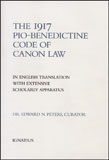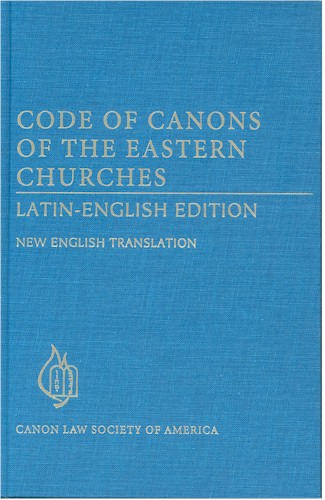|
To work for the proper implementation of canon law is to play an extraordinarily constructive role in continuing the redemptive mission of Christ. Pope John Paul II |
|
|
|
|
Resolution 1152 x 864 |
Updated 17 jan 2013 |
Reviews of Annulments and the Catholic Church (2004) previous title 100 Answers to Your Questions on Annulments (1997)
|
|
Joseph Koterski, sj, in Homiletic and Pastoral Review, (Jan 2005) =.
|
Few aspects of Catholicism provoke as many questions as does the topic of annulments. The cynical often regard it as “Catholic divorce,” available at least for the rich, but even well-meaning Catholics easily grow perplexed about just how annulment differs from divorce, except that annulments seem to require a lot more persistence to obtain.
In a volume that will be highly useful to priests anxious for a refresher course on the subject as well as to anyone thinking about seeking an annulment, Edward Peters clarifies many of the technical points of theology and canon law that have sparked confusion and controversy. This book will also be a tremendous resource for many educators, from teachers of high school marriage classes to seminary instructors. Peters has doctoral degrees in civil and canon law and has worked with tribunals in Maryland, Minnesota, and California, and his book is well annotated throughout with references to the relevant provisions of the 1983 Code of Canon Law.
Among the 100 questions with which he deals is the surprise people sometimes exhibit at finding a lay person (like Peters himself) as a tribunal judge, for canon law is still perceived by many as the preserve of priests. A few stories from his own experience as a husband and a father of six children add to this book a certain charm that compliments the confidence that his professional competence and years of tribunal experience inspire.
The topics that Peters treats range from the purely practical to the profoundly theological. In the area of procedure, he explains the steps to be taken at every stage, from early inquiries at the parish level, through the process used by the tribunal, to the rendering of a formal judgment and the possibilities of appeal. Throughout these sections Peters shows great good sense in explaining the general system that the Church uses while constantly exhorting the person who feels anxious over delays or is concerned that justice is not being done, to consult local officials rather than to perpetuate the stereotypical complaints made about annulments without giving the system an adequate chance to perform its designated function.
At the more theoretical level, Peters offers a well-balanced view of this delicate matter within a framework of great fidelity to the Church’s teaching on marriage. The annulment process, Peters explains, works both to maintain justice and to extend mercy. It starts from the presumption (somewhat analogous to the principle of common law whereby a person is presumed innocent until proven guilty) that a couple who have gone through a wedding ceremony are presumed to have married until the tribunal can legitimately establish that they did not in fact marry whether because of some problem with form, with the capacity of one or both of the parties to enter marriage, or with the consent of one or both of the parties. Yet there is an important difference: the annulment process is not like a criminal trial, for it is not a matter of discerning guilt, finding fault, or casting blame, but rather a forum for discovering the truth about whether there truly was a marriage from the beginning – even the “guilty party” (for instance, the spouse who broke up the relationship by adultery) may bring a petition for annulment!
By careful presentation of many examples typical in tribunal work today, Peters forcefully conveys sense of what does and what does not serve as grounds for the Church to declare that what might have been perceived as a true marriage was not one. On this precise point we can see one of the main reasons why annulment is not like divorce, for it is not the Church’s way of trying to terminate a marriage that for some reason or other has failed (or as Peters puts it, “good marriages that go tragically bad are not necessarily null.”) While information about the final breakdown of a couple’s relationship might shed light on the conditions that prevailed back at the time of the wedding ceremony, such information is not directly “evidence” that would be decisive for a judgment of nullity, in contrast to information, say, about a person’s canonical incapacity at the time of the wedding to make free commitment of self needed for a valid marriage. Peters explores such topics as alcoholism and drug addiction and explains the relatively high burden of proof that must be met to prove a psychological incapacity for giving sufficient free consent to marriage vows.
What is especially interesting to the reader concerned with the Church’s recent practice in granting annulments (some charging that there are now too many, some that there are still too few) is Peters’ comparison between the practice of American tribunals and the Roman Rota. In the course of defending, in general, the tribunal system in the United States, he explains the important changes that were made in canon law when the 1983 code replaced that of 1917 and the enormous effect those changes had on annulment jurisprudence. In his analysis, clearer legal and theological insight about the legitimate grounds for identifying invalidity in attempts at marriage also help to identify some of the causes of the current chaos in marriage and family life.
|
|
Victoria Vondenberger, rsm, in The Jurist 59 (1999) 495-497.
|
The
information in this text will assist people in many varied life circumstances to
understand tribunal processes. This beautifully bound book with large print that
is easy on the eyes presents clear and basic information. Dr. Peters clarifies
that not every petitioner will receive an affirmative decision, that not every
marriage that is questioned can be declared null.
The
author avoids technical terms as much as possible. He is careful to explain what
a declaration of nullity is as well as what it is not, gently correcting common
misunderstandings, and debunking myths in very comprehensible language. The
author chooses not to specify minute details of any one local tribunal
organization aware that each tribunal appropriately carries out procedural law
depending on the size of a diocese or the number of people on a particular
tribunal staff. Misinformation about the local scene is well avoided.
In [197] pages of basic text framed as responses to questions about
marriage cases, Dr. Peters offers concise information. His text is usually
clear. Readers will find that the author occasionally succumbs to the
canonist’s eternal temptation to include tangential information that clarifies
for those schooled in the law, while sometimes clouding the issues for those
without a canon law background. It is amazing that Dr. Peters so seldom falls
into the typical canonist’s dilemma of trying to explain a related issue
(which any canon lawyer might raise) which may confuse one who is unaware of the
complexity involved and the very precise use of language in the discipline of
canon law, (Questions 2, 16, 28).
Unobtrusive insertion of references to the canons and detailed footnotes
will satisfy those with some canonical knowledge while not disturbing the flow
of information for the person with knowledge of Church law. Clever analogies
(Questions 3 and 9) such as comparing divorce and annulment to the differences
between leaving work in a car or an ambulance help readers understand law in
very simple yet adequate terms.
Respondents and witnesses will find this book helpful and precise as will
petitioners and parish priests who do not frequently participate in tribunal
processes. The author is careful to indicate the rights of respondents in the
process. The organization of topics and the index make it easy to research a
particular question that may arise. This text is obviously written by a
practicing canonist who enriches the facts about law with personal insights as
in offering comments about siblings and parents as witnesses in the response to
Question 68. Dr. Peters tries to alleviate common fears of witnesses about
testifying in a Church court.
In the final chapter, Dr. Peters responds to frequently heard criticisms of American tribunal practice offering information about context and revisions of procedural law, stating solid facts, and using more clever analogies....This book presents information about a complicated process in clear and concise language that will invite understanding.
|
|
Jimmy Akin, in This Rock (Feb 1998) =.
|
There are certain questions I hate answering as an
apologist. Among them are questions about annulments. The subject is not only a
sensitive one for many people, it is also very complicated. People feel confused
by the issue, and that alone (apart from touchy marital situations) makes them
uncomfortable with it. Fortunately, Edward N. Peters, a tribunal judge and canon
lawyer with the Diocese of San Diego, has written a book on the subject that
will spare me having to answer a lot of questions. Before this book’s
publication, I had no in-depth resource on annulments to which I could point
people.
|
|
Others |
Keith Bower, Couple to Couple League's Family Foundations (May-June 2005) 30-31.
|






